2021 Maureen Keller Student Awards
José Luis García Corona (Best Oral Presentation)
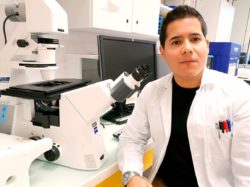
José Luis García-Corona is a marine biologist who graduated with honors from the Autonomous University of Baja California Sur in 2014. He received the State Youth Award and the Science and Technology Medal in 2017 for his contributions to science in Mexico. He obtained a Master of Science degree in aquaculture biotechnology from the Biological Research Center of the Northwest in 2018, where he developed alternatives to improve gonad maturation and oocyte quality in marine bivalves with commercial interest in Mexico. His research is mainly focused on the study of the physiological, functional, and genomic responses of marine bivalves with high-commercial interest that face changing environmental conditions.
Since 2019, he is a doctoral researcher at the Laboratory of Marine Environmental Sciences of the European Institute of the Sea, in Brittany, France. During the 19th edition of the International Conference for the Study of Harmful Algal Blooms, he was honored with the Maureen Keller award for his oral presentation on the discovery of the subcellular mechanisms involved in the accumulation and long retention of the amnesic toxin, domoic acid (DA), in the tissues of the king scallop, Pecten maximus. His doctoral research, supervised by Dr. Caroline Fabioux and Dr. Helene Hegaret, aims to decipher the main physiological and molecular mechanisms involved in contamination and decontamination kinetics of domoic acid in P. maximus, comparing its response with other fast-DA depurating species.
Steffaney Wood (Oral Presentation, Honorable Mention)
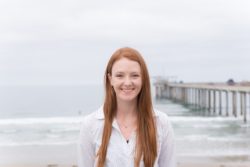
Steffaney is a PhD student at Scripps Institution of Oceanography, UCSD in the Bradley Moore and Andrew Allen labs. She currently studies domoic acid biosynthesis in Pseudo-nitzschia diatoms. In May 2020, she completed a MS in Microbiology and Microbial Biotechnology at the University of Helsinki, Finland. For her MS thesis, she continued the work she began as a Fulbright-EDUFI Fellow at the Finnish Environment Institute Marine Research Centre, conducting research on harmful cyanobacteria blooms in the northern Baltic Sea. The work presented at ICHA2021 was part of her MS research.
Steffaney is also a 2018 graduate of Davidson College where she majored in Environmental Studies with a Chemistry minor. During her time at Davidson, she was awarded a NOAA Hollings Undergraduate Scholarship and had the opportunity to work in Dr. Vera Trainer’s lab. She credits this experience with fostering her interest in the ocean sciences and HAB research.
Taichi Ataka (Best Poster Presentation)
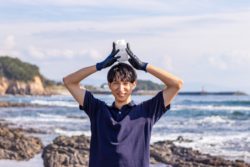
Taichi Ataka, Kochi University, Japan, received the Maureen Keller student award for the best poster titled, “Effect of adding macroalgal extracts on the growth of Gambierdiscus scabrosus and G. silvae isolated from Japan”, co-authored by Hiroshi Funaki, Haruo Yamaguchi, and Masao Adachi. Born in Japan, he pursued Bachelor of Agriculture and Marine Science at Kochi University and is pursuing his Master’s degree at Kochi University under the supervision of Prof. Masao Adachi. In Japanese coastal waters, ciguatera poisoning (CP) sometimes occurs in the subtropical area of Okinawa. Aiming to understand a mechanism of the outbreaks of CP in Japan, it is important to elucidate the causative organisms and toxins. Gambierdiscus scabrosus and G. silvae, which the mouse bioassay has shown to be highly toxic, were previously thought to be the causative agents of the CP in Japan. However, ciguatoxins were not detected in these two species using LC-MS/MS analysis, which suggests that they produce unknown toxins. To purify and to identify the toxins, mass-culture of cells is needed, however, optimizing the conditions for G. scabrosus and G. silvae growth is critical. To understand the best conditions for mass cultivation of G. scabrosus and G. silvae, Taichi focused on the effect of fractions extracted from macroalgae on the growth of these two species. His experimental results showed that the addition of lipophilic extracts from some species of Rhodophyta to the cultures significantly enhanced the growth of these two Gambierdiscus species. In the future, it is expected that mass culture of Gamberdiscus using macroalgal fractions will facilitate the identification of toxins involved in CP.
Teresa Silva (Poster Presentation, Honorable Mention)
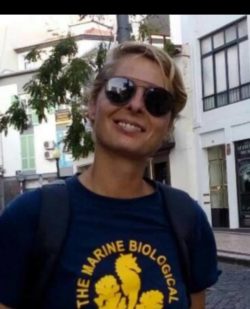
Teresa Silva was awarded with an honorary mention for her poster presentation, “BHAB occurrence in the south coast of Madeira Island, Portugal: from 2018 to 2020”, co-authored by Ana Amorim, Ana Sousa and Manfred Kaufmann. Teresa has a degree in Biology from the University of Aveiro and a MSc. in Molecular Biology and Genetics from the Faculty of Sciences of the University of Lisbon (UL), Portugal. In 2011, she joined the team of the Marine and Environmental Sciences Centre (MARE, UL) integrating several scientific projects focusing on phytoplankton ecology and chemotaxonomy. Under her Master´s, she investigated the physiological, toxin and genetic characteristics of G. catenatum populations occurring in the Portuguese mainland coast. She also studied the contribution of G. catenatum life cycle in bloom dynamics. In 2016, she moved to Madeira Island (Portugal) to join the MPhytoLab (PI: Manfred Kaufmann), University of Madeira, where she is collaborating in several studies aiming to characterize the phytoplankton communities from seamounts and islands of the Macaronesian region, as well as to characterize the BHAB populations occurring in the Madeira Archipelago. Currently, Teresa is working on her PhD project “Harmful benthic dinoflagellates from Madeira Archipelago in a changing ocean: ecology, systematics and toxicity” (Supervisors: Ana Amorim - University of Lisbon, Manfred Kaufmann - University of Madeira & Philipp Hess - IFREMER-France). Her main research goal is to characterize BHAB assemblages in coastal waters of Madeira Island, in order to assess risks and provide baseline information for the implementation of a sustainable monitoring.

